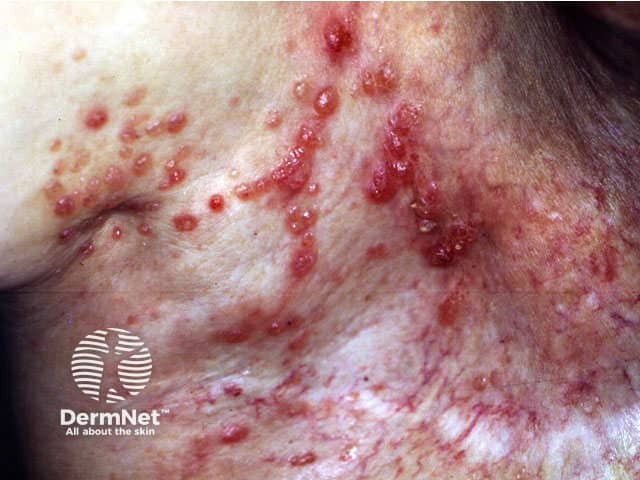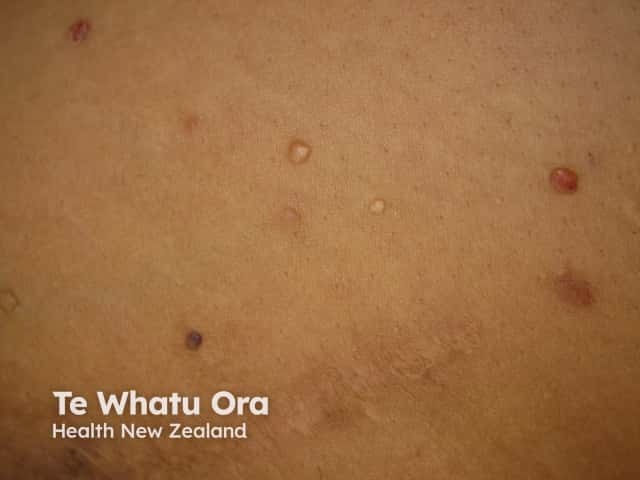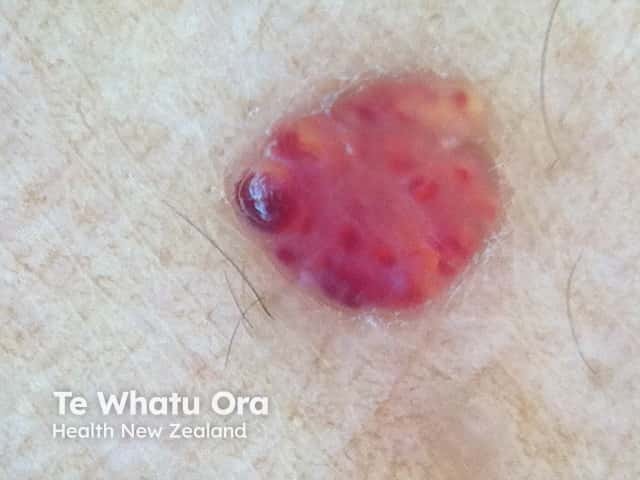Main menu
Common skin conditions

NEWS
Join DermNet PRO
Read more
Quick links
Author: Dr Amanda Oakley, Dermatology, Hamilton, New Zealand, 2011.
Introduction Causes Clinical features Complications Tests Treatment
Lymphangiectasia, also called lymphangiectases, refers to swollen lymphatic vessels. This can be congenital or acquired.
Acquired lymphangiectasia may be associated with:
Acquired lymphangiectasia presents as clear or haemorrhagic papules often described like frogspawn. The small bumps tend to ooze a clear or milky fluid after minor injury.
Lymphangiectasia may affect the following sites:

Acquired lymphangiectasia

Secondary lymphangiectases

Dermatoscopic view
Acquired lymphangiectasia can be painful. The poor lymphatic drainage may lead to bacterial infection (cellulitis).
In most cases the history and examination findings will be enough to explain the lesions. Skin biopsy may be necessary to confirm the presence of the thin-walled lymphatic vessels.
Imaging and other tests may be necessary to establish whether there is a leak or blockage in the lymphatics.
Acquired lymphangioma can be difficult to treat. The affected area must be kept scrupulously clean to reduce the risk of infection. Compression may be useful to reduce swelling caused by lymphoedema. Sometimes, electrosurgery, laser therapy, sclerotherapy, cryotherapy or surgical excision may be attempted.